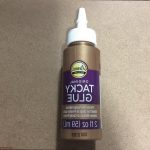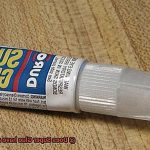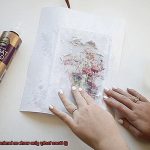WD-40, the superhero of lubrication and rust prevention, has a secret power that not many know about – its ability to battle stubborn adhesive residues. But is it truly a glue remover extraordinaire? In this blog post, we’re diving deep into the world of sticky situations to separate fact from fiction and find out if WD-40 is the ultimate glue-busting champion.
The process of using WD-40 to tackle glue is as simple as it gets. Shake that can like there’s no tomorrow to ensure all those magical ingredients are mixed to perfection. Then, unleash a generous spray of WD-40 directly onto the clingy residue you want gone. Give it a few minutes to penetrate and work its voodoo magic on the adhesive. Finally, grab your trusty cloth or sponge and gently scrub away that loosened goo.
One of the coolest things about WD-40 as a glue remover is its uncanny ability to dissolve and break down all sorts of adhesives. Stickers, tape, labels – you name it, WD-40 can handle it with ease. Plus, its lubricating powers come in handy by protecting delicate surfaces from any collateral damage during the removal process.
Now here’s the deal – while WD-40 often triumphs in adhesive battles, its effectiveness depends on some factors. The type and age of the glue play a role in this sticky game. Older or tougher glues might need some extra rounds or additional scraping for complete victory over residue. And when dealing with delicate surfaces like soft plastics or painted materials, do yourself a favor and test a small hidden area first to make sure WD-40 won’t cause any unexpected disasters.
But wait. There’s one more thing you should know before entering this battlefield of adhesives – WD-40 comes with an intense odor warning. Yeah, its solvent-based formula packs a punch in the smell department, which some folks find less than pleasant, especially when used in tight spaces. So, make sure you’ve got proper ventilation to save your nose from any unwanted surprises.
In conclusion, WD-40 is like a trusty sidekick when it comes to removing glue, but it’s not invincible. With the right approach and a sprinkle of caution, it can be a powerful tool in your adhesive removal arsenal. So go forth, my friend, armed with knowledge and WD-40 – together, you’ll conquer even the
What is WD-40?
Contents
- 1 What is WD-40?
- 2 Can WD-40 Remove Glue?
- 3 Types of Glue That Can Be Removed with WD-40
- 4 Preparing to Use WD-40 to Remove Glue
- 5 Steps for Removing Glue with WD-40
- 6 Cleaning Up After Removing Glue with WD-40
- 7 Other Methods for Removing Glue
- 8 Things to Consider Before Using WD-40 to Remove Glue
- 9 Conclusion
When it comes to solving everyday household problems, WD-40 has become the go-to product for many people. This multi-purpose lubricant and solvent, known for its versatility, has gained a reputation for tackling a wide range of tasks. In this article, we will explore the properties of WD-40 and its potential as a glue remover.
Understanding WD-40:
WD-40 stands for “Water Displacement, 40th formula.” Created by chemist Norm Larsen in 1953, it was originally intended as a water-displacing formula. Today, it is composed of petroleum-based solvents, mineral oil, and a secret ingredient. This unique formulation combines lubricants, cleaners, and corrosion inhibitors to offer an array of benefits.
The Power of WD-40:
WD-40’s primary purpose is to displace water and prevent rust and corrosion. By forming a protective barrier on metal surfaces, it repels moisture and prevents oxidation. This makes it highly effective for lubricating moving parts, loosening rusted or stuck nuts and bolts, and protecting tools from rusting.
Using WD-40 to Remove Glue:
While not specifically formulated as a glue remover, WD-40 can help loosen certain types of glue. Its solvents can break down and dissolve adhesives to some extent. To effectively remove glue with WD-40, follow these steps:
- Test on a small area: Before applying WD-40 to a larger surface, test it on a small, inconspicuous area to ensure there is no damage or discoloration.
- Apply directly: Spray a small amount of WD-40 onto the affected area where the glue is present.
- Allow penetration time: Let the WD-40 penetrate the glue for a few minutes. This softens the adhesive and makes it easier to remove.
- Gently scrape off: Use a plastic scraper or credit card to gently scrape off the softened adhesive. Be careful not to scratch or damage the surface.
- Repeat if necessary: For stubborn or thick layers of glue, repeat the process until all the adhesive is removed.
- Clean the area: After removing the glue, clean the area with soap and water to eliminate any residue left behind by WD-40.
Important Considerations:
It is crucial to note that WD-40 may not be suitable for all types of glue or surfaces. The effectiveness of WD-40 in removing glue can vary depending on factors such as the type of glue and the surface it is applied to. Some adhesives may require specialized adhesive removers or techniques for effective removal. If WD-40 does not fully remove the glue, alternative methods or professional assistance may be necessary.
Can WD-40 Remove Glue?
We’ve all experienced the frustration of trying to remove stubborn glue residue left behind by stickers, labels, or tape. It’s a sticky situation that can leave us scratching our heads and wondering if WD-40 is the secret weapon we need.
Today, we will delve into the effectiveness of this multi-purpose lubricant and solvent in removing glue from various surfaces.
So, grab your reading glasses and let’s uncover the nitty-gritty truth.
The Science Behind WD-40:
WD-40 packs a powerful punch with its blend of chemicals, including mineral spirits, petroleum distillates, and other solvents. These ingredients work harmoniously to break down adhesives, making them easier to remove. However, it’s important to note that while WD-40 is not specifically designed as a glue remover, it can still be effective depending on the type of adhesive and surface you’re dealing with.
Surface Matters:
When it comes to removing glue, the surface you’re working on plays a crucial role. WD-40 shines brightest on non-porous surfaces like glass, metal, or plastic. Its penetrating power allows it to dissolve adhesive bonds effectively, making your task easier.
However, porous surfaces such as wood or fabric pose a tougher challenge. If the glue has already penetrated these materials, WD-40 may struggle to completely eliminate it.
Tips for Success:
To achieve optimal results when using WD-40 as a glue remover, follow these simple steps:
- Test First: Before applying WD-40 to the entire affected area, test it on a small inconspicuous spot to ensure it won’t damage or discolor the surface.
- Application: Spray a small amount of WD-40 onto the glue and let it sit for a few minutes. This allows the solvents to penetrate and soften the adhesive.
- Gentle Removal: Gently rub or scrape away the softened glue using a soft cloth or plastic scraper. If needed, repeat the process until all traces of glue are gone.
- Alternative Methods: If WD-40 alone doesn’t do the trick, consider additional techniques like applying heat with a hairdryer or using a mild adhesive remover designed for the specific type of glue you’re dealing with.
Types of Glue That Can Be Removed with WD-40
When it comes to glue, we all know how sticky and stubborn it can be. But fear not. There’s a secret weapon that can make glue disappear like magic – WD-40.
This versatile product isn’t just for fixing squeaky doors or loosening rusted bolts; it can also be used to remove various types of glue. Let’s dive into the world of adhesive removal and discover how WD-40 can save the day.
Sticky Sticker Residue:
Stickers are fun, but removing them can leave behind a pesky residue that seems impossible to get rid of. Luckily, WD-40 is here to save the day. Just spray some WD-40 directly onto the residue, let it sit for a few minutes, and witness the magic unfold.
The adhesive will start to loosen, allowing you to easily wipe away the residue with a clean cloth. Say goodbye to sticky sticker remnants.
Super Glue Savior:
Super glue may be tough, but it’s no match for the power of WD-40. If you find yourself stuck with super glue on your fingers or surfaces, simply grab a bottle of WD-40 and watch as it works its magic. Spray a small amount of WD-40 onto the super glue and give it a few minutes to work its wonders.
Then, armed with a scraper or even your trusty fingernail, gently scrape off the softened glue. Just be careful not to scratch the surface underneath.
Craft Glue Be Gone:
Craft glues like white glue or school glue are no trouble for WD-40 either. If you’re dealing with wet glue, soaking it in warm soapy water usually does the trick. But what if the glue has dried and hardened? No worries. Just apply some WD-40 to soften it up. Give it a few minutes to work its magic, and then grab a cloth or sponge to scrub away the softened glue. Say goodbye to those craft glue mishaps.
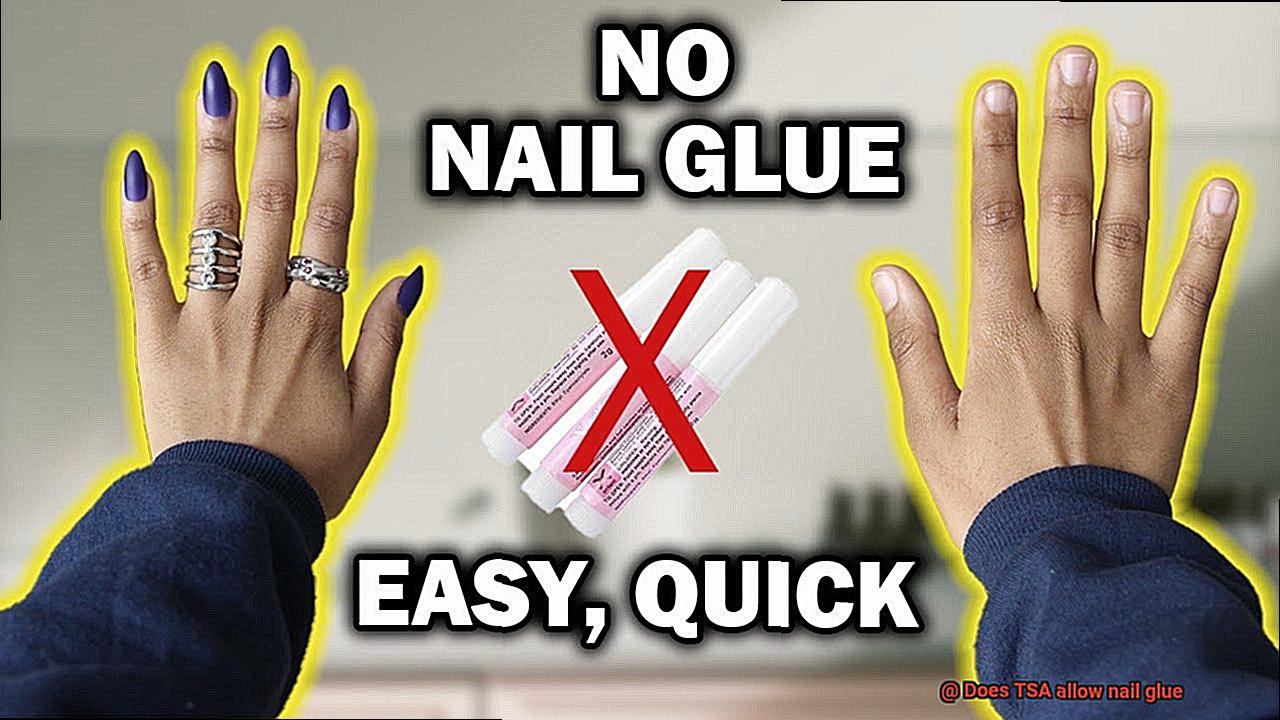
Wood Glue Woes:
Woodworking projects often involve wood glue, which can leave visible residue if not properly cleaned. But fear not, for WD-40 is here to save the day once again. Spray it onto the affected area, let it sit for a few minutes, and watch as the wood glue dissolves before your eyes. Now you can easily clean up the mess and admire your beautifully crafted woodwork without any trace of glue.
The Limitations:
While WD-40 is a powerful glue remover, it may not work on all types of glue. There are some strong adhesives like epoxy or construction glue that might require specialized solvents or professional help. It’s always a good idea to test WD-40 on a small, inconspicuous area first to ensure it won’t damage or discolor the surface. Remember, caution is key.
Preparing to Use WD-40 to Remove Glue
Removing stubborn glue residue can be a frustrating task, but with the help of WD-40, it can become a breeze. However, before you start using WD-40, it’s crucial to properly prepare for the task at hand. Here are some important steps to follow:
- Gather your materials: Before you begin, make sure you have everything you need. This includes WD-40, gloves, a scraper, cloth or sponge, and a well-ventilated area to work in. Having all your supplies ready will make the process more efficient.
- Safety first: Protect your hands by wearing gloves throughout the process. Additionally, make sure you’re working in a well-ventilated area to avoid inhaling any fumes. Open windows or work outdoors if possible.
- Test a small area: It’s always a good idea to test a small, inconspicuous area before applying WD-40 to the entire surface. This will help you determine if WD-40 is suitable for the type of glue you’re dealing with and if it will cause any damage or discoloration.
- Identify the type of glue: Different glues require different approaches for removal. Take a moment to identify the type of glue you’re trying to remove. Check for packaging labels or do some quick research to find common characteristics of that particular glue. This will help you choose the most effective method.
- Read the instructions: Some glues may require additional steps or alternative solutions for removal. Always read and follow the manufacturer’s instructions for optimal results. This will ensure that you’re using WD-40 correctly and safely.
- Use the right tools: Depending on the surface and type of glue, you may need a scraper, cloth, or sponge to assist in the removal process. Choose the appropriate tool for the job to avoid damaging or scratching the surface. A plastic scraper is often recommended as it is less likely to cause damage.
Remember, patience is key when using WD-40 to remove glue. Apply the WD-40, let it sit for a few minutes to penetrate the glue, and then gently scrape away the residue. Avoid using excessive force or rushing the process as this can cause unintended damage. Take your time, follow the steps, and watch that stubborn glue disappear right before your eyes.
Steps for Removing Glue with WD-40
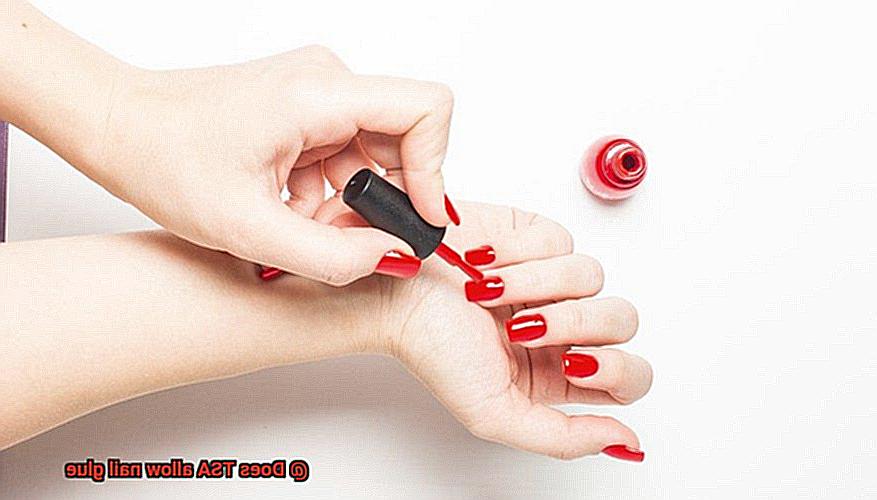
WD-40 is here to save the day. In this article, we will guide you through the steps for removing glue with WD-40, ensuring a hassle-free experience and a clean surface in no time.
Step 1: Gather your supplies
Before diving into the glue removal process, make sure you have all the necessary materials on hand. These include a can of WD-40, a clean cloth or sponge, and warm soapy water. Being prepared will help you tackle the task efficiently.
Step 2: Test on a small area
To avoid any potential damage or discoloration, it is crucial to test WD-40 on a small, inconspicuous area of the surface where the glue is present. This step ensures compatibility and gives you peace of mind before proceeding further.
Step 3: Apply WD-40
Once you’ve confirmed that WD-40 is safe to use, it’s time to unleash its magic. Spray a small amount directly onto the glue, ensuring even coverage. Watch as WD-40 penetrates and dissolves the adhesive, making it easier to remove.
Step 4: Let it sit
Patience is key. Allow WD-40 to sit on the glue for a few minutes. This gives it time to work its magic and soften the adhesive, making it more pliable for removal.
Step 5: Gently scrape or peel off the glue
Now comes the satisfying part – removing the softened glue. Use a plastic scraper or your fingers to gently scrape or peel off the adhesive. Remember to be gentle to avoid scratching or damaging the surface underneath.
Step 6: Repeat if necessary
Stubborn glue may require extra effort. If there are still traces remaining, don’t fret. Reapply WD-40 and repeat the scraping process until all the adhesive is gone. Persistence is key when it comes to defeating stubborn glue.
Step 7: Clean the surface
Victory is near, but don’t forget this essential step. Once all the glue is removed, it’s important to clean the surface thoroughly. Use warm soapy water and a clean cloth or sponge to remove any residue left behind by the WD-40.
Step 8: Dry and polish
To complete the process, dry the surface with a clean towel and, if desired, use a suitable polish or cleaner to restore its original shine. Admire your glue-free, sparkling surface.
Cleaning Up After Removing Glue with WD-40
Dealing with stubborn glue residue can be a real headache. But fear not. WD-40, the versatile household product, is here to save the day. In this article, we will guide you through the steps of using WD-40 to effortlessly remove glue and achieve a clean surface in no time.
Step 1: Ensure Proper Ventilation
Before diving into the process, make sure you’re working in a well-ventilated area. WD-40 has a strong smell that can be harmful if inhaled excessively. Open windows or use a fan to circulate fresh air.
Step 2: Apply WD-40
Spray a small amount of WD-40 directly onto the glue residue. Be cautious not to overuse it, as excessive WD-40 may damage certain surfaces. Let it sit for a few minutes, allowing it to penetrate and loosen the adhesive.
Step 3: Gently Rub in Circular Motions
Using a clean cloth or sponge, gently rub the area in circular motions. Watch as the adhesive starts dissolving and coming off. Avoid applying too much pressure, as delicate surfaces can be easily damaged.
Step 4: Repeat if Necessary
If the glue proves stubborn, reapply a small amount of WD-40 and continue gently rubbing until all residue is removed. Patience is key.
Step 5: Wipe Down with Damp Cloth
Once the glue is successfully removed, wipe down the area with a damp cloth to eliminate any remaining WD-40 residue. Thoroughly cleaning the surface is vital to prevent dirt or dust buildup over time.
Step 6: Dry Thoroughly
To avoid moisture-related issues, like mold or mildew growth, dry the area with a clean cloth or towel. Leave no moisture behind.
Important Tips:
- Test WD-40 on a small, inconspicuous area first to ensure compatibility with the surface.
- Follow the adhesive manufacturer’s instructions, as some glues may have specific recommendations for removal.
Other Methods for Removing Glue
No one likes dealing with sticky situations caused by glue. Whether it’s the residue from a stubborn sticker on a glass surface or an accidental spill on your favorite shirt, finding effective methods for removing glue is essential. While WD-40 is a popular choice, it’s always handy to have alternative techniques up your sleeve. In this article, we’ll explore some other tried-and-true methods that will help you conquer those sticky situations like a pro.
Rubbing Alcohol or Isopropyl Alcohol:
- Drench a cloth or cotton ball in rubbing alcohol.
- Gently rub the glue until it dissolves.
- Test the alcohol on a small area first to ensure it won’t damage the surface.
Vinegar:
- Soak a cloth or sponge in vinegar.
- Place it on top of the glue for several minutes.
- Gently scrub the area with a soft brush or cloth until the glue loosens.
Citrus-Based Solvents:
- Utilize lemon oil or orange oil, containing d-limonene that dissolves adhesives.
- Apply the solvent onto a cloth or sponge.
- Rub it onto the glue until it starts to loosen.
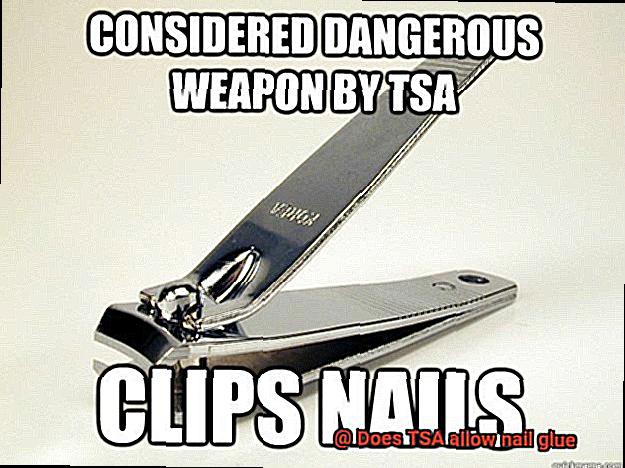
Peanut Butter or Mayonnaise:
- Apply a small amount of peanut butter or mayonnaise onto the glue.
- Let it sit for a few minutes.
- Gently rub the area with a soft cloth or sponge until the glue comes off.
Heat:
- Warm up the glue using a hairdryer.
- Scrape off the softened glue with a plastic scraper or credit card.
- Exercise caution and avoid excessive temperatures that could damage surfaces.
Things to Consider Before Using WD-40 to Remove Glue
Imagine grappling with the stubborn residue of a sticker or label, desperately seeking a solution. Enter WD-40, the iconic blue and yellow can that promises to be the ultimate hero.
However, before you embark on your quest armed with this versatile household product, take a moment to consider a few important factors. In this article, we will explore the crucial aspects of using WD-40 for glue removal, empowering you to make an informed decision and confidently conquer any sticky situation.
Safety First: Protecting Yourself and Your Surroundings
Prioritize your safety by following manufacturer instructions and consulting professionals if unsure about using solvents on specific surfaces. Excessive inhalation of WD-40 fumes can be harmful, so work in a well-ventilated area or equip yourself with protective gear such as gloves and masks.
The Glue Conundrum: Know Your Adhesive
Not all glues are created equal, and different adhesives may react differently to WD-40. Identify the glue type you’re dealing with to determine if specialized solvents or techniques are required. When in doubt, seek guidance from professionals or consult manufacturer guidelines.
Surface Sensitivity: Preservation is Key
WD-40 is a petroleum-based solvent that can potentially damage certain materials like plastic, rubber, or painted surfaces. To avoid unintended consequences, test WD-40 on a small, inconspicuous area before applying it to the entire affected surface.
Effectiveness Matters: Managing Expectations
While WD-40 is often hailed as a magical solution, it may not work equally well on all glues. Don’t lose hope if it doesn’t yield desired results; explore alternative techniques or enlist professional assistance for stubborn glue removal.
Environmental Impact: Responsible Disposal
Let’s not forget our responsibility to the environment. WD-40, like many solvents, contains hazardous chemicals that can harm the ecosystem if not disposed of properly. Adhere to local regulations and consult waste management authorities for correct disposal methods.
1IqX7eZxcY8″ >
Conclusion
WD-40, the wonder product that has saved us from countless sticky situations, is often hailed as a miracle worker.
But does it have what it takes to tackle stubborn adhesive residue? The answer is a resounding yes.
WD-40 can indeed remove glue with ease and finesse. Its powerful formula effortlessly dissolves the stickiness and leaves behind a clean surface.
Whether you’re dealing with pesky price tags on glassware or remnants of tape on your walls, WD-40 comes to the rescue like a superhero armed with a trusty solvent cape. Say goodbye to scraping and scrubbing endlessly – just a few spritzes of this magical elixir and the glue melts away like ice in the summer sun.
So, next time you find yourself in a sticky situation, reach for that iconic blue and yellow canister of WD-40 and let its enchanting powers do their thing.



